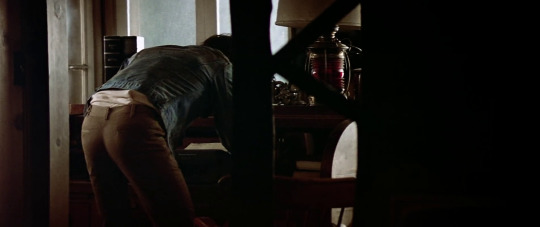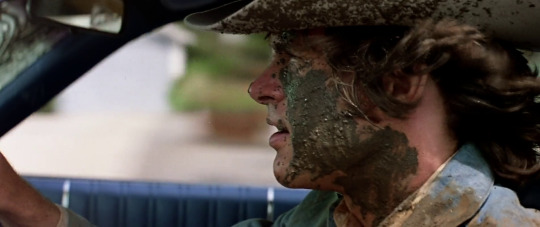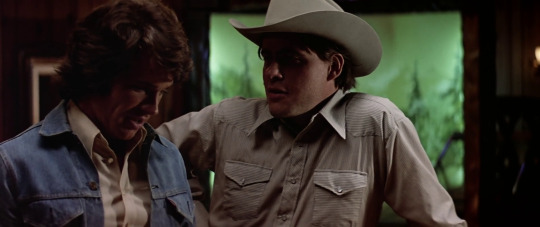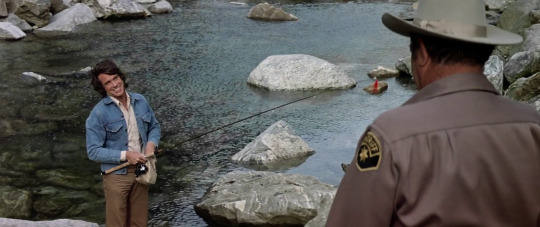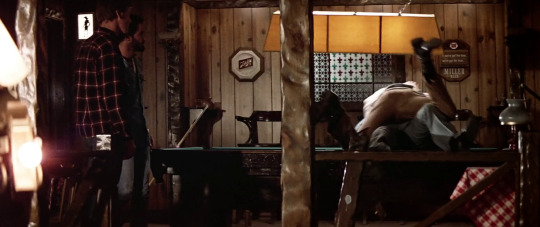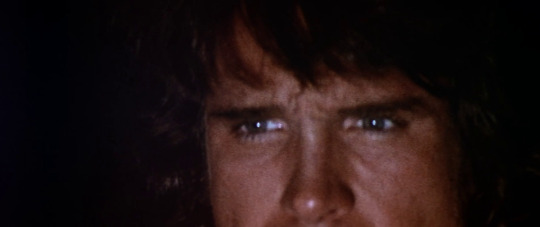#parallax view
Explore tagged Tumblr posts
Text
Notebook Reviews: ARLINGTON ROAD
Mark Pellington – 1999. Arlington Road is a first-rate conspiracy thriller from director Mark Pellington. This suburban tale of terror has a great cast – Jeff Bridges, Tim Robbins, Joan Cusack, and Hope Davis – all doing great work. There’s a real sense of the late Alan Pakula’s 1970s work here (Klute, The Parallax View and All the President’s Men) – and it’s all the better for it. It’s stylish,…
#alan j pakula#all the presidents men#arlington road#hope davis#jeff bridges#joan cusack#klute#mark pellington#notebook review#parallax view#thriller#tim robbins
0 notes
Text

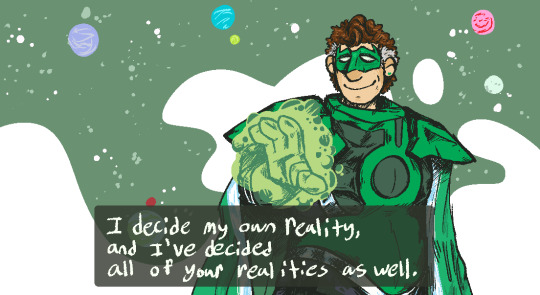
sorry gang ive been FIXATED on mister Hal Jordan, as evidence heres a thing i searched up

#art#dc comics#hal jordan#green lantern#parallax#im gonna keep it real i do not and will not subscribe to parallax bein that buuuug#like I'm fine with the bug existing and stealing parallax's name or vice versa#but I genuinely feel that it just does NOT work with parallax stories prereveal and kinda ruins em? idk#I'm not fooond of iiiit#its a beautiful and sad story of a good man finally breaking under pressure and grief. the bug dont gotta be there too#thatsaid i will now be viewing hal as a classic dc character trope of 'what if there was a system of two guys'#i should make his hair even greyer next drawing
117 notes
·
View notes
Text
Apparently Zizek did a talk about quantum physics at a conference dedicated to Lee Smolin
#brings in copernican revolutions... real contradictions... parallax... hegel and lacan of course...#and i think he asks smolin a really important question near the end about how views of universal progression dont tie into#the hyperlocalization implied by quantum physics
22 notes
·
View notes
Text

Slavoj Zizek, The Parallax View, 2009
43 notes
·
View notes
Text
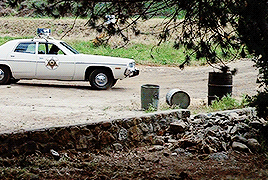
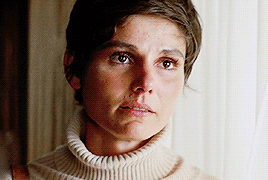

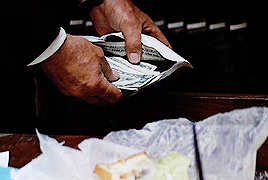
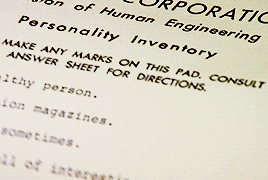
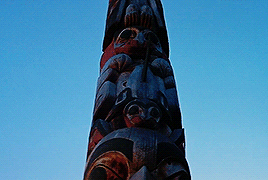

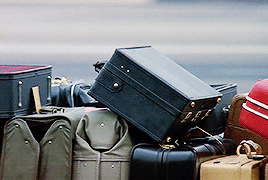
THE PARALLAX VIEW (1974) - Directed by Alan J. Pakula
#the parallax view#filmedit#filmgifs#moviegifs#fyeahmovies#dailyflicks#cinematicsource#moviehub#filmtvcentral#filmtvdaily#tvfilmsource#userfilm#userthing#usersource#70sedit#70s#1970s#requests#edit#films#by carolina
116 notes
·
View notes
Text

#saskia reeves#ladies#fiona apple#cuter than a button mutton-head maniac#ladies ladies ladies ladies#ruminations on the looming effect and the parallax view#and the figure and the form and the revolving door that keeps turning out more and more#good women like you#yet another woman to whom i won't get through#Spotify
9 notes
·
View notes
Text









Warren Beatty in The Parallax View (1974)
#warren beatty#the parallax view#1974#70s movies#1970s film#cold war thriller#alan j. pakula#70s hair#actor posts
27 notes
·
View notes
Text










the parallax view (1974), dir. alan j. pakula
14 notes
·
View notes
Text
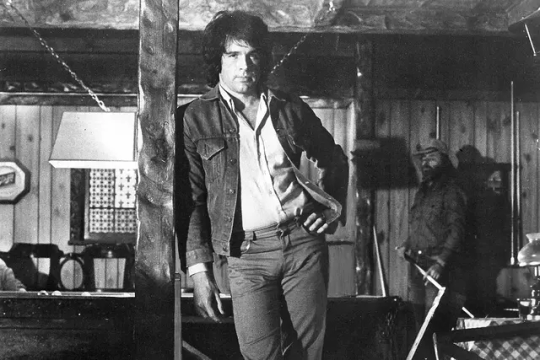
BBC2 Moviedrome (1988)
The Parallax View (1974)
Warren Beatty
13 notes
·
View notes
Text
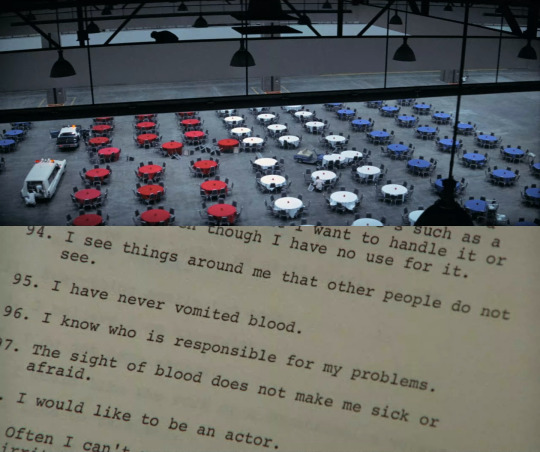
The Parallax View (Pakula, 1974)
34 notes
·
View notes
Text
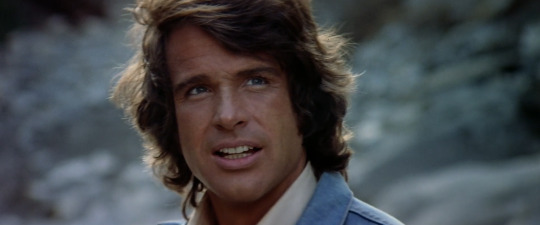


The Parallax View Alan J. Pakula. 1974
Dam Gorge Dam, Rockport, Washington 98283, USA See in map
See in imdb
#alan j. pakula#the parallax view#warren beatty#dam#rockport#gorge dam#washington#united states#movie#cinema#film#location#google maps#street view#1974
26 notes
·
View notes
Text
thoughts on the season 2 finale of SEVERANCE, and where the show can go from here
slapping a read more onto this for length and also spoilers, but tl;dr I think that the ending of season 2 was/is the real "Macrodat Uprising", and in season 3 the class conflict between innies versus outies (both those directly imprisoning/dehumanizing the innies, as well as those who ostensibly want to "save" the innies by bringing down Lumon) is gonna come into the forefront
WHEW BABY, what a season. so to quickly summarize/recap where the chess pieces sit on the board: Gemma is outside, currently in the exit stairwell. innie Mark chose Helly, and the two of them are running together toward an uncertain future on the severed floor. Jame Eagan has been trying to sire a worthy successor to Kier, which he thinks he sees in Helly R. Irving's on a train (but will apparently be coming back). Dylan G and his outie have largely reconciled, and now Dylan is holding Milchick hostage with the help of a 50-man marching band. Reghabi's in the wind again. Cobel has her blueprints and an uneasy partnership going on with Devon. we now know what the numbers are (sorting the tempers in order to manufacture a "new" innie personality for each testing room) and what the goats are for (ritual sacrifices each time a file is completed and a new testing room opens).
ALSO, some interesting points that may shed some additional context on season 2 and the future season 3 (now confirmed, yippee!):
I can't find the source for this off-hand but apparently Ben Stiller and Dan Erickson have said that the ending of season 2 is actually where Erickson wanted season 1 to end originally, with Stiller convincing him that season 1 ending on the OTC would be better. to me this at least tracks with the way season 2's pacing has kind of been all over the place, especially in the back half -- simultaneously feeling like a lot is getting crammed in, while also forcing certain plot threads to stay on the backburner (see: everything regarding Irving)
the show has picked up some new showrunners and writers for season 3 -- the interesting thing for me here is the increased emphasis on writers with experience doing comedy and also "weird"/high-concept tv (Preacher, Wilfred, Doom Patrol, Kevin Can F*** Himself, etc)
I forget where I read this but an interesting take on season 2 is that it's kind of been hamstrung by the overall shift away from featuring stories or characters that exist outside of Lumon: no Alexa, no Ricken's friends, no June, barely any Ricken even. this lets us spend more time on the severed floor (which is arguably the draw of the show) but also has the effect of making the outside world seem smaller and have less impact on the story.
presumably this is because Severance and its writers are grappling with the all-important question of "how do we keep this show interesting, compelling, exciting, etc., while also propelling the narrative and characters forward instead of making them freeze in place or drag their feet in resolving critical tensions?" in other words: with the characters where they now are, how can you take them and do something new?
so here's what I think: "Cold Harbor" (and also "The After Hours", since that's where we leave Burt and Irving) makes sense as an intended season 1 finale because almost everyone has done a full-180 in terms of who they are and what they want or believe when we first meet them (both at the start of season 1, and also the start of season 2 to some extent). this is most important in the context of Mark; sorry y'all, but he is in fact the protagonist -- although arguably Helly/Helena is now deuteragonist at minimum. anyway, to my point:
outie Mark knows that Gemma is alive, thus removing his reason to be mired in grief; he is also now fully on board with reintegration (even if it's still for mostly selfish reasons), contra to him telling Petey originally that he was never going to reintegrate because severance was "good for him"
conversely, innie Mark -- the company man, the guy who was going along to get along, who wanted to be a good department chief and then wanted to be a good partner to his outie self so they (he) (Mark Scout) could get his wife back -- has fully asserted his own personhood and right to exist on his terms, sharing the half-life he's been given with the person he loves. as we see in the episode, this puts him into conflict not only with Lumon, but also with the people on the outside (Devon and Mark Scout, namely) who may or may not genuinely mean him well but ultimately can't get over the fact that they see him as an appendage, a non-entity who they can disregard or put aside or kill if it suits their vision
what this signifies to me is that in many ways "Cold Harbor" is the start of the real innie revolution, so to speak. we've gotten shades of this previously -- Mark's speech to O&D about living in the dark, the "Macrodat Uprising", Mark's appeals to Mammalians Nurturable, Helly telling Dylan that Gretchen is treating him "like all the outies treat us" and urging him to find someone for himself "down here" -- but it's only now that we've begun to see real "class" solidarity between innies, with Lorne saving Mark from Drummond and Dylan teaming up with the marching band. Mark and Helly are about to start a movement!
there's a lot of opportunity for corporate satire here (let alone satirizing proto-revolutionary groups and the political movements they try to seize on or inspire), and also plenty of ways to make things Weird(TM), which I think squares with the new showrunners' experience
I also think it's REALLY REALLY INTERESTING that the show has now drawn parallels between Kier and both Mark and Helly now, and ostensibly Kier's whole thing (minus the cult) was that he wanted to improve and exalt the workers and the conditions that they lived and worked on. Jame tells Helly he sees Kier in her SPECIFICALLY when she says that his family created Hell and he's going to burn in it -- makes Kier seem like he was a fiery-spirited, revolutionary kind of guy, almost a preacher in some ways (which is also in keeping with the influences of Mormonism and Scientology on Lumon and the cult of Eagan)
with the marching band on board, the innies also have extra leverage -- they're literally holding Milchick (and also, arguably, Helena Eagan) hostage. we've already seen that Lumon works hard to maintain an all-powerful, panopticon-like front for the innies, but time and again we've also seen how that falls through due to Lumon's short staffing and cutting corners (cf. not picking up on MDR's OTC plans until after the fact, having only one security guy per season who twice now has gotten killed). so I don't think the resolution is going to be as simple as "Lumon sends in a ton of goons to clear everyone out and capture/imprison Mark and Helly"
if anything I think there'll be a lot of parallels to the Attica Prison riot of 1971 (which is of the right period and location to be in the minds of the showrunners). to summarize: prisoners took over a large block of Attica Prison and held corrections officers and civilian employees hostage so that they could demand better living conditions and unalienable political rights. they spoke directly to "the People of America" and brought in outside observers considered "knowledgeable of [prison] conditions" to help with negotiations, but also wrote a manifesto that circulated to the public:
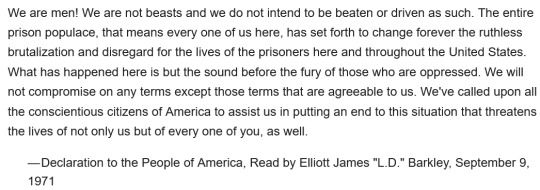
ultimately the state would use violent force to retake the prison and end up killing or wounding most of the hostages as well as dozens of prisoners, which...doesn't exactly bode well for the innies' chances, but I also think Lumon might be extra hesitant to call in overt armed force given the wrinkle of "we can't allow any of this to go public and severed workers coming home wounded or dead is a REALLY bad PR move". unless they decide not to give a shit!! and just, idk, lie to the public ("your spouse tragically perished in a workplace incident where a gas main exploded", or something along those lines. and big payouts to the families of those affected in order to keep them quiet)
anyway I was talking about what the innies are gonna do with a friend of mine and she pointed out that plot-wise it seems like we're done with refining -- Cold Harbor is finished for better or worse, Gemma as a test subject is free, and as an audience we now KNOW what the deal is, more or less, with the numbers. potentially Lumon doesn't even NEED more refining done now that there's God knows how many completed files. so maybe they'll just string the innies along, letting them think they're getting somewhere with their quirky little uprising because at the end of the day the innies are stuck on the severed floor...and Lumon's goals are much, much bigger.
TO WHIT: Lumon's (and the Eagans') overarching mission in season 3 will be a huge push to make severance a part of everyday life, for everyone -- not just a subset of workers at Lumon. this seems pretty obvious given Jame's comments about making the world "children of Kier" and "ridding the world of pain"
as much as I'm rooting for the Seth Milchick Crashout Arc Of The Decade, I think he's pretty firmly in Lumon's camp for now (whether that's wholeheartedly or with reservations is a topic for another day). if the focus of the show is gonna move away from innies "working" and "refining", I could see him, as manager of the severed floor, taking a sort of negotiator/middleman position between the innies and Lumon higher-ups (assuming they actually let him off the floor, lmfao).
I could also see him taking on a more outward-facing role in assuring the public that, actually severance is great! our workers are happy to be here! as manager of the severed floor I am doing my utmost to ensure optimal conditions at work to best suit their needs... (this might also have him tag-team with Natalie, who we've already seen address the public on severance issues in news broadcasts and the like)
oh my god what if season 3 does a gimmick episode that's framed as a news crew going "inside" Lumon's severed floor and making a documentary-type of expose. I would go fucking crazy
ANYWAY, I think-slash-hope that season 3 will put Milchick into more focus (maybe even a Milchick-centered episode?) such that by the end of the season his crashout comes fully into play and he turns on Lumon more directly. this would especially make sense if he DOES end up taking a sort of "negotiator" role between the severed floor and the outside world...or even if he just, like, stays hostage to the innies and really sees the extent to which they're willing to fight for the little life Lumon has given them
I was about to say this could have shades of Patty Hearst's kidnapping but actually that would be MUCH more appropriate for Helena -- would be absolutely wild if the innies play into the idea of "taking the CEO's daughter hostage", somehow switch the Glasgow block on and off so that Helena can send messages to the outside world professing her belief (real or faked) in their cause, etc...I mean arguably, Helly R is already the "Tania" to Helena's Patty Hearst!
it's not exactly an accident that I keep referencing the 70s; I mean, the period is clearly on the showrunners' minds, with both their choices in music as well as the grainy freeze frame dissolve to red that ends "Cold Harbor" (which, as others have pointed out, 100% echoes the ending of The Graduate)
The Graduate (1967) is one of the seminal films of the American new wave of cinema, a time when both movies and moviegoers were "growing up" and dealing with more mature, complex issues, so to speak. this took place in conjunction with the Baby Boomer generation exiting adolescence and entering the world as fully-fledged adults, with all the messiness and disappointments and hard choices that that entails...which I also think dovetails nicely with the oft-repeated point that, if season 1 is the innies' "childhood", then season 2 is their rebellious teenage years, making season 3 their own entry into adulthood
sidenote: I'm convinced that the Break Room segments owe something to the interrogation scene in The Parallax View (1974) -- highly recommended viewing!
also worthy of mention, just while we're on the subject of 70s films starring Dustin Hoffman, are both Marathon Man (with its own brand of horror dentistry -- "Is it safe?") and All The President's Men, which of course follows Woodward and Bernstein's expose of the Watergate cover-up...another topic that might become thematically relevant to the plot of Severance
with Lumon and/or severance taking a more public-oriented shift, I think that'll be coupled with (as said previously) a greater focus on the "outside" world, and specifically the group (or groups?) of people working to bring down Lumon on the outside: Reghabi, Irving (and Burt), Devon, and Cobel (and whoever else Reghabi and/or Irving may be working with)
I get why people are frustrated that the season seemed to drop certain plot threads instead of bringing everything to a fruitful resolution -- Irving and his co-conspirators, why and how he knows about the black hallway, Mark reintegrating but not really (which I'll get to in a minute) -- but my view is that, much like my beloved LOST, Severance is operating on a different scale of pacing: these plot points aren't necessarily forgotten, but they're allowed to recede into the background and then come back into play when they're more directly relevant
and especially after the interview with John Turturro linked above, I feel PRETTY confident that next season is going to delve deeper into the various anti-Lumon efforts going on on the outside (and also Irving's whole deal, why he's gunning against Lumon, etc etc etc. Irving-centric episode, maybe?)
one thing that stood out to me in the episode is the fact that innie Mark told Cobel that he already knew about the black hallway "from Irving's drawings", which made Cobel have a VERY clear "wtf" reaction -- my guess is that this will be enough for Cobel (and Devon) to track down Irving and loop him into their cause. presumably Irving would then bring Burt on board, with the two of them being motivated by the possibility of having a life together (possibly as their outies...but also possibly as their innie selves, on the "inside"? it would be interesting if Lumon tries to manipulate/turn Burt or Irving to their side by extending the offer of letting them live in peace -- "innocence" -- together on the severed floor)
meanwhile I still think the most parsimonious explanation for who Irving was talking to on the payphone is that it's Reghabi (and/or whatever group of people she may be working for), which will be how she gets roped back in to this mess. I mean you can't NOT have her and Cobel face off and/or be forced to work together while they squabble about severance technology like two mad scientist ex-girlfriends, right?
speaking of which, something important that I haven't seen mentioned much is the fact that Cobel has her blueprints -- the proof that it was she and not James Eagan who invented severance! so if season 3 ends up building towards a sort of global expansion of severance on Lumon's part, I could see our outside co-conspirators (Reghabi, Irving, Devon, Cobel, et al) staging their own version of an expose: Cobel shows that the Eagans stole and perverted her tech, Devon and Irving reveal what life is really like on the severed floor, and Reghabi offers the solution of reintegration as a means for preserving both the outie and innie persons. this could also be a way to re-thread Petey back in, since Cobel also has his chip -- "remember that former Lumon employee who died mysteriously? it was the severance chip that did it, and I have the proof"
which brings us to the all-important question...what about Gemma?
this is where the issue of "how do we push these characters forward and do something new with them" really comes into play, imo. after a season devoted to finding and rescuing Gemma, I REALLY don't think season 3 is going to immediately pull a 180 and have Gemma be recaptured by Lumon from the stairwell, purely from a narrative perspective.
HOWEVER, it can't be denied that Lumon absolutely wants to get their hands on Gemma...or more specifically her chip, so they can extract it and harvest the data they need from Cold Harbor and all those other files. but they also obviously need to take Gemma herself off the playing field, lest she go to the public with her horror stories of the testing floor.
my crazy tinfoil hat theory: Lumon is going to neutralize the threat that Gemma poses by turning on her chip externally and switching her into Miss Casey, OTC-style. (or maybe the protocol is slightly different for her as a testing floor subject, idk -- I can't imagine someone holding those two switches 24-7...) Miss Casey doesn't know shit about the testing floor, and is also literally 108 hours old. nobody will ever believe her!
simultaneously this opens the floor to a wealth of fascinating story possibilities: how does Miss Casey deal with existing on the outside? how does she deal with Devon -- who I'm sure will see Gemma in her, just like she saw her brother in Mark S? (also another interesting place to bring in the theme of "infantilization" re: the innies -- Devon drawing parallels between Miss Casey and her infant daughter...) how does Miss Casey navigate a space where she slowly but surely is starting to become her own person, especially while Devon (and Cobel, Reghabi, etc) is steadily working towards her eradication in order to bring Gemma back?
this would also be another great way to keep Cobel and/or Reghabi involved in the plot, if they need to work together to try and jerry-rig Gemma's chip in order to either "switch off" Miss Casey (probably what Cobel wants) or reintegrate her (what Reghabi would want) -- plus there's plenty of opportunities for Dichen Lachmann to show off her acting chops, if there's additional fuckery with the chip that leads to the activation and/or reintegration of her 24 other innie personalities
I mean, don't get me wrong, I would LOVE if Gemma Scout herself gets out of Lumon and is placed more or less in Mark's shoes, trying to get her dead-wife husband out of the basement. one of my friends pointed out that Lumon could just as easily discredit her should she try to go public -- "this is just a crazy woman, she killed one of our employees (i.e. blaming her for Drummond's death), Gemma Scout was declared dead and cremated", etc. and it would be awesome if Gemma gets to be her own fully-fledged character after two seasons. PLUS we still have the largely-unresolved matter of how she got roped into faking her own death (by which I mean exactly how much of a willing participant she was in Lumon's plot). and they could still work in Cobel and Reghabi's mad science fuckery, if say Gemma were to want to reintegrate, or if she thinks it's necessary to "truly" expose what Lumon is doing
idk, it could go either way! I just adore Miss Casey, and I think depicting her learning how to be a person and navigate the outside world would contrast really nicely with everything going on with the innies, who are learning to do the same thing on the severed floor...in a manner of speaking
because ultimately, whatever burgeoning movement Mark and Helly put together is destined to fall apart -- not because of Lumon bringing down the hammer, necessarily speaking, but because of reintegration
here's what I'm thinking: Helly is already positioned as the radical of the bunch, loudly insisting that the innies should band together, fight for what they have -- albeit we're already seeing some nuance, with her telling Mark "But I'm her" and the look of empathy she gives Gemma at the end of the red hallway. but I think in general Helly is gonna take on more of a leader-like role among the innies and basically argue that they should hold their own outies (if not Milchick) hostage -- "why should WE let THEM go back to their lives and not allow us to live ours?", that sort of thing
but we already know that if nothing else Dylan is likely going to have a problem with that, because of the response his outie wrote to him (which, btw, was absolutely masterful as a point of contrast with the way Mark spoke to his own innie). Dylan George extends the offer of empathy, of acknowledging his innie as a person who has things which he, outie Dylan, lacks -- not to mention Dylan G knows his (outie's) family is relying on him, and you can better believe Lumon will be cutting off those paychecks if the innies aren't doing their work. so I think Dylan's arc will have him grapple with whatever his obligations to his outie should be, compared and contrasted with the prospect of having an equivalent life on the inside. (Helly telling Dylan he should find someone "down here" also makes me wonder if season 3 will introduce a potential innie love interest for Dylan -- though come to think of it, it would also be wild if Gretchen ends up severing, possibly at Lumon's behest? IDK I'M JUST SPITBALLING, you know this show loves its complicated love polygons)
where I think Dylan's arc is gonna end up leading him, though, is reintegration -- which he's going to learn about from Mark, because OBVIOUSLY...Mark is going to continue reintegrating. well, kind of.
a really interesting point I read regarding Mark's "will-they-won't-they" reintegration is that we all got bamboozled. despite the numerous fakeouts, the flashes and time skips, Mark S and Mark Scout haven't "really" reintegrated, because they CAN'T -- not until or unless they really start to see their other self as a whole person in his own right. my tinfoil hat take is that it's this conflict which is ultimately the root cause of reintegration sickness, i.e. the brain/the chip struggling to reconcile two persons into one -- the only way out is through, you need to fix your heart or die. and obviously innie Mark isn't going to have access to any of Reghabi's treatments on the severed floor (although it WOULD be extremely funny if he somehow undergoes his own flavor of experimental basement brain surgery), so he is gonna get REAL sick
I'm almost positive that among other things, Mark's chip is going to intermittently short out (possibly triggered by Lumon pulling some fuckery with the Glasgow block) so that outie Mark gets the chance to meet the other innies, namely Helly. (like, can you imagine? outie Mark pretending to Helly that he's his innie self, as a direct parallel to Helena pretending to be Helly in this season?)
this would all eventually lead to Mark at death's door due to reintegration sickness and only surviving it once his innie and outie selves sort of accept each other...but that could also drive a wedge, possibly irreconcilable, between him and Helly, who wants "her" innie Mark alone, not him combined with some outie dickhead.
but ultimately I think most of the other innies that Helly and Mark bring to their cause will go for the reintegration option, once they end up learning of it (presumably after Mark successfully reintegrates)...BUT I also think that season 3 might introduce a means by which an outie personality can be permanently severed/erased, since it would work to raise the stakes for Helly and the rest of the innies
okay, CHRIST this got long. can't wait for this show to prove me 100% wrong in two years' time
#severance#severance spoilers#severance season 2#cold harbor#automatonic posting#god. now i wanna go rewatch THE PARALLAX VIEW#editing to add: OHHHH SHIT I FORGOT THE PARALLAX VIEW ALSO DOES A BIT WITH A MARCHING BAND FLIPPING TILES. GOD. GOD!!!!!!!
6 notes
·
View notes
Text

The Parallax View (Alan J. Pakula, 1974)
5 notes
·
View notes
Text

socials ⭐️ portfolio ⭐️ comms ⭐️ vgen
#pixelart#aseprite#pixel illustration#pixel art#pixel#artists on tumblr#oc artist#oc#oc art#gif art#ocean view#ocean#sea#parallax#video game#seagull#my ocs#my characters#original character
30 notes
·
View notes
Text
it's exactly two months since i first watched atpm and i just watched it for the 40th time i really really do live in the washington post offices in 1972 now i think i'm trapped here forever
#i knew i was going to hyperfixate the day after i watched it you know when you can just Feel it starting#i had the urge to watch it again so i started to watch something similar but turned it off bc it couldnt hold my attention#bc it wasnt atpm. sorry the parallax view i'll finish you at some point#micah.txt
10 notes
·
View notes
